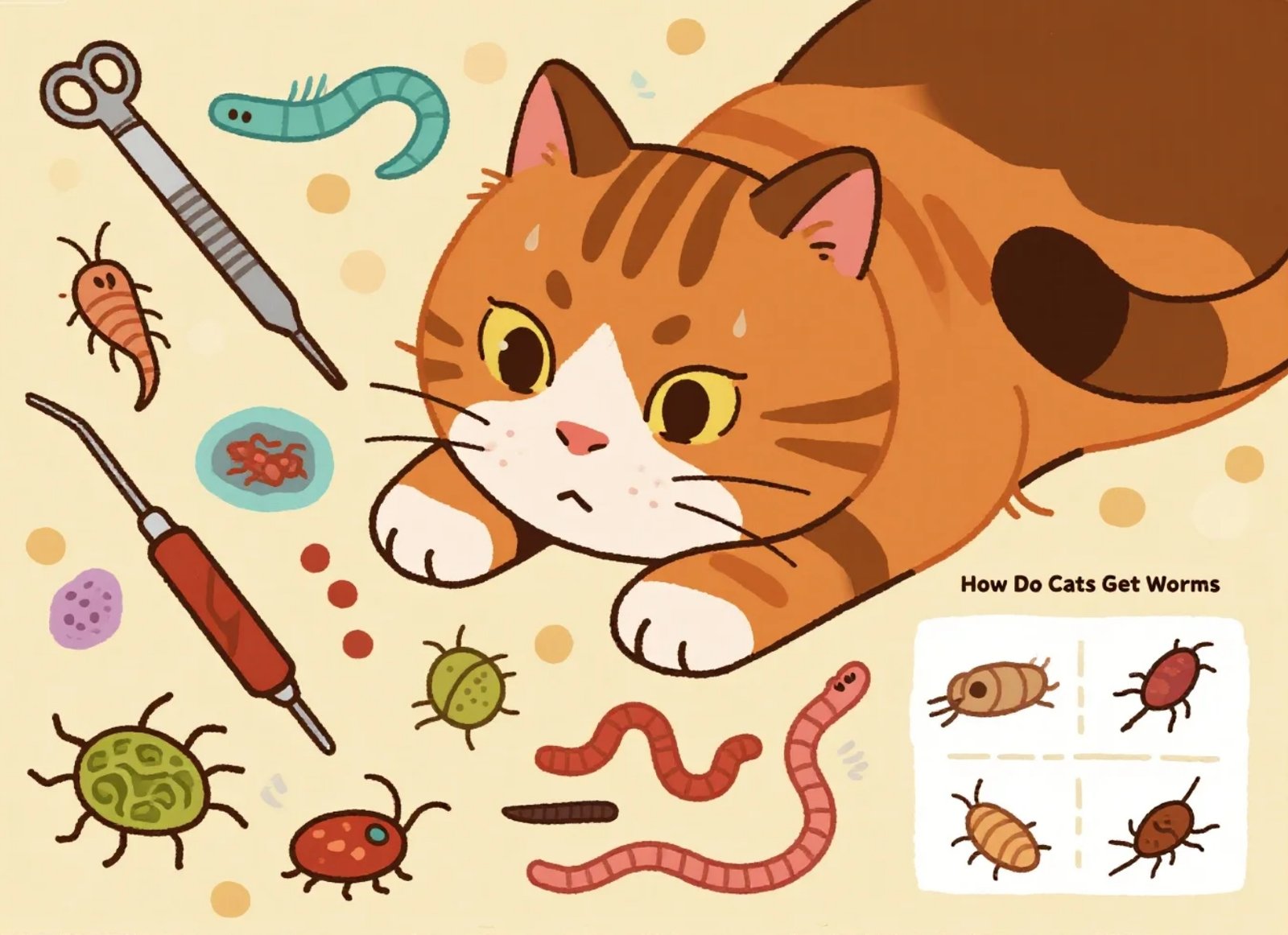That adorable purring bundle curled up on your lap brings endless joy. But hidden inside, unwelcome guests – intestinal worms – could be silently sapping your cat’s health. Understanding how cats get worms isn’t just about gross trivia; it’s the crucial first step in protecting your feline friend. These parasites steal vital nutrients, cause digestive upset, and in severe cases, especially for kittens, can even be life-threatening. Let’s uncover the surprising ways these invaders find their way into your cat.
Table of Contents
1. The Hunting Instinct: Consuming Infected Prey
Cats are born hunters. When they catch and eat rodents, birds, reptiles, or insects (like roaches or earthworms), they risk consuming worm larvae or eggs living inside that prey. This is one of the most natural, yet riskiest, ways cats get worms, particularly roundworms and tapeworms. Even indoor cats aren’t entirely safe if mice find their way inside.
2. The Flea Connection: An Unexpected Gateway to Tapeworms
Fleas are more than itchy nuisances. They act as essential carriers for the most common tapeworm (Dipylidium caninum). When a cat grooms and accidentally swallows an infected flea, the tapeworm larvae inside the flea develop into adult worms within the cat’s intestines. Controlling fleas is absolutely critical to preventing this specific route of worm infection.
3. Mother’s Milk: A Path to Kittens
Tragically, mother cats (queens) can pass roundworm larvae directly to their nursing kittens through their milk. This transmission happens even if the mother appears healthy, as dormant larvae become active during pregnancy. This is why virtually all kittens are born with or acquire roundworms very early in life, making deworming protocols for kittens and nursing mothers essential.
4. Contaminated Soil: Eggs Lying in Wait
Infected cats shed microscopic worm eggs in their feces. These eggs contaminate soil, sandboxes, or garden areas. When your cat walks on this soil and then grooms their paws, they can ingest the eggs. Other cats using the same litter box or outdoor area are also at high risk. This is a major way cats get worms like roundworms and hookworms from their environment.
5. Direct Skin Penetration: Hookworm’s Stealthy Entry
Hookworms pose a unique threat. Their larvae don’t always need to be eaten. They can actively burrow directly through a cat’s skin, usually the paws or belly, when the cat lies on contaminated soil or sand. Once inside, they migrate to the intestines to mature. This direct skin penetration makes hookworms a particularly sneaky invader.
6. Coprophagy: The Unpleasant Habit
While less common in adult cats, some cats (especially curious kittens) may eat feces – their own or that of other animals (coprophagy). If that feces contains worm eggs or larvae, ingestion directly leads to infection. Preventing access to litter boxes used by other cats and promptly cleaning up feces outdoors reduces this risk.
7. Contaminated Water Sources
Though less frequent than other routes, cats drinking from puddles, streams, or stagnant outdoor water sources risk ingesting water contaminated with worm eggs or larvae. Providing fresh, clean water indoors at all times helps deter this behavior and reduces this exposure route.
Protecting Your Cat: Prevention is Key
Knowing how cats get worms empowers you to act. Here’s your defense plan:
- Regular Veterinary Deworming: Follow your vet’s recommended deworming schedule. This targets worms acquired since the last treatment. Kittens need frequent deworming starting very young.
- Strict Flea Control: Use veterinarian-approved flea prevention products year-round on ALL pets in your household. This breaks the tapeworm life cycle.
- Prompt Litter Box Duty: Scoop litter boxes daily and clean them thoroughly regularly. Dispose of waste properly.
- Limit Hunting (If Possible): Discourage hunting if feasible, especially for cats at high risk.
- Clean Environment: Keep indoor and outdoor areas (patios, sandboxes) clean. Restrict access to areas potentially contaminated by other animals.
- Veterinary Checkups: Annual or biannual wellness exams include fecal tests to detect worms not visible to the naked eye. Bring a fresh stool sample!
Don’t Let Worms Take Hold
Understanding the common paths – from hunting and fleas to mother’s milk and contaminated soil – is your best weapon against intestinal parasites. By implementing consistent prevention strategies like regular deworming, vigilant flea control, and maintaining a clean environment, you significantly shield your cat from the discomfort and dangers worms bring. Partner with your veterinarian to create the perfect parasite prevention plan tailored to your cat’s lifestyle. A proactive approach ensures your feline companion stays healthy, happy, and worm-free.
